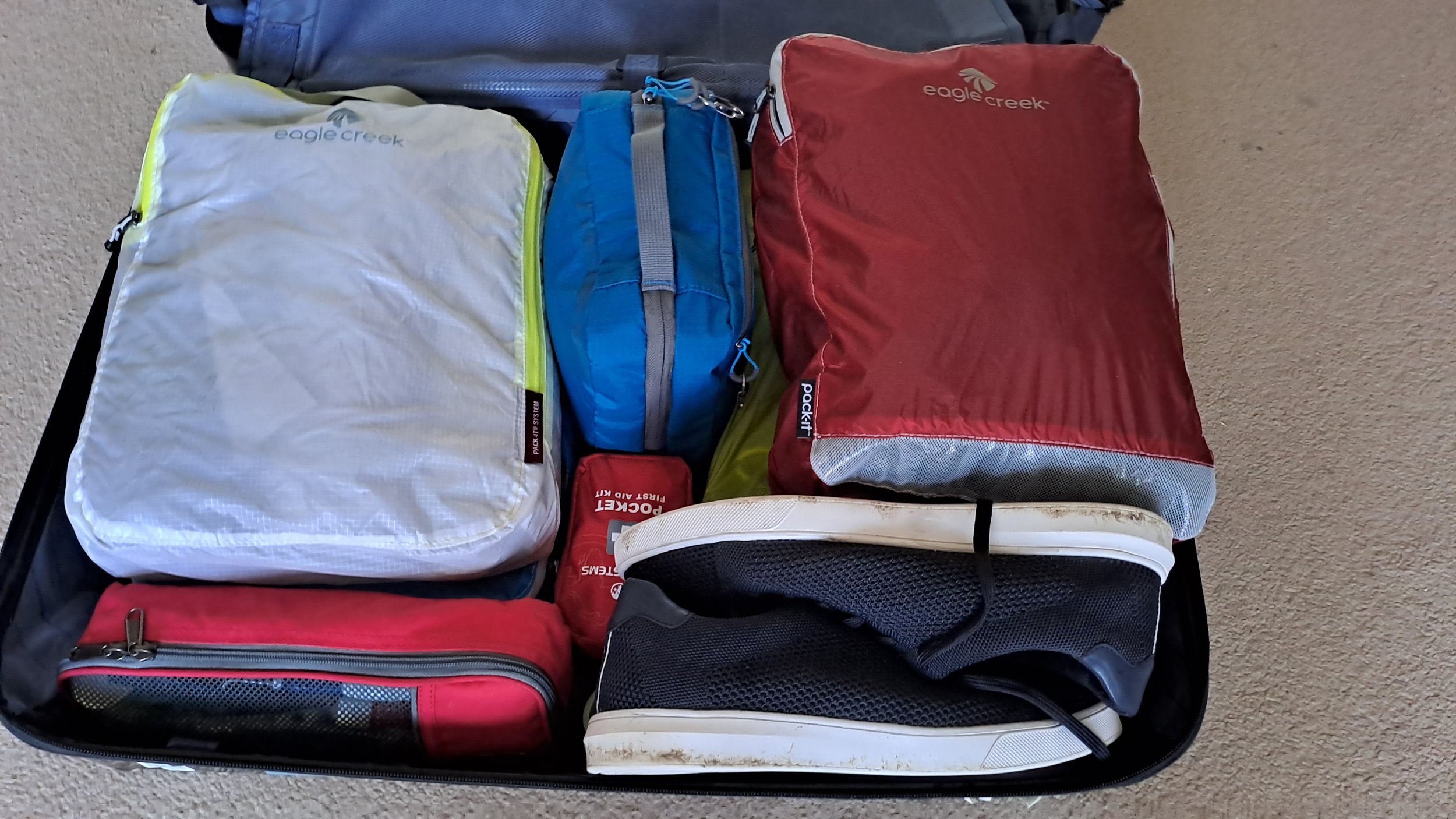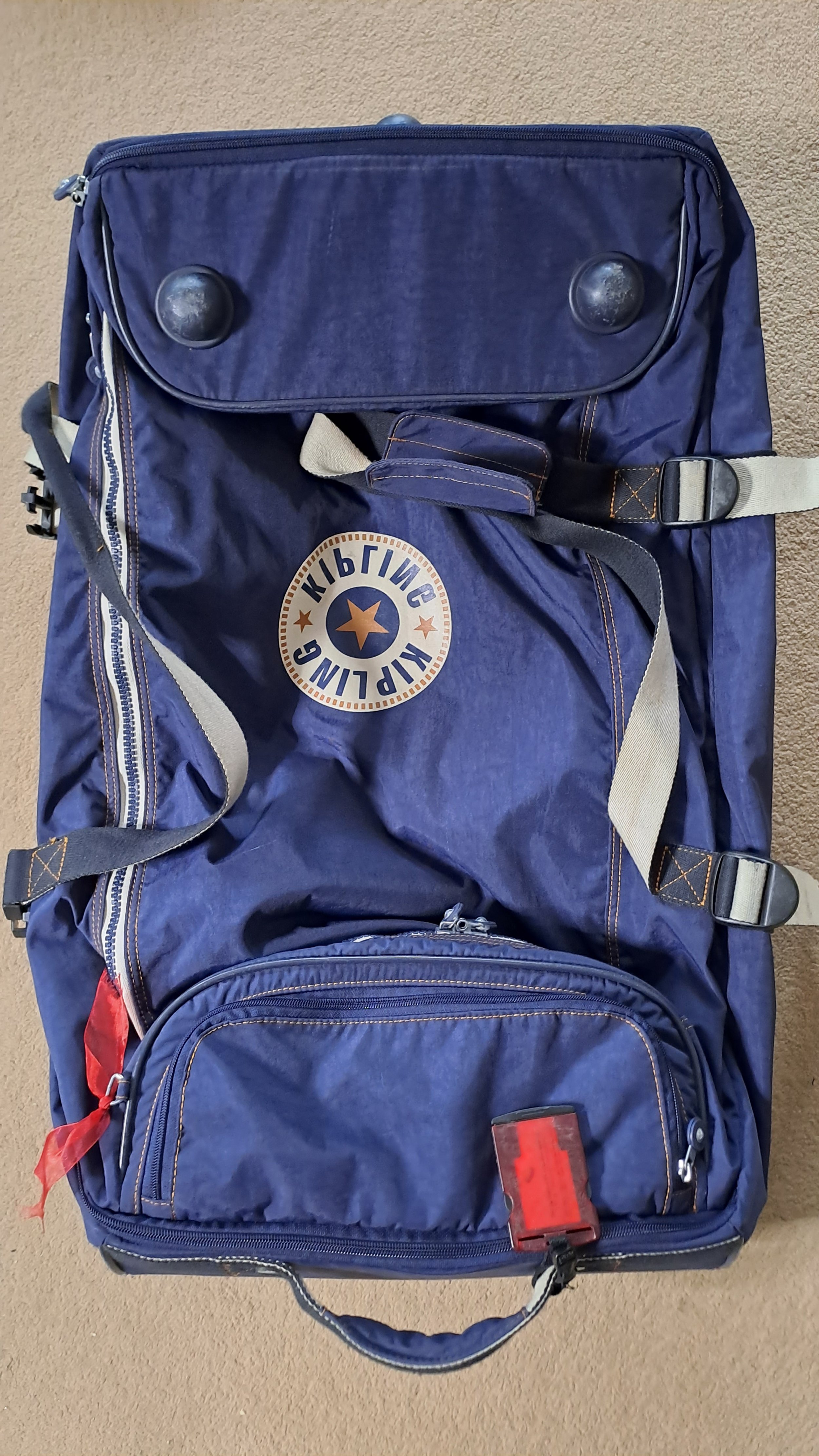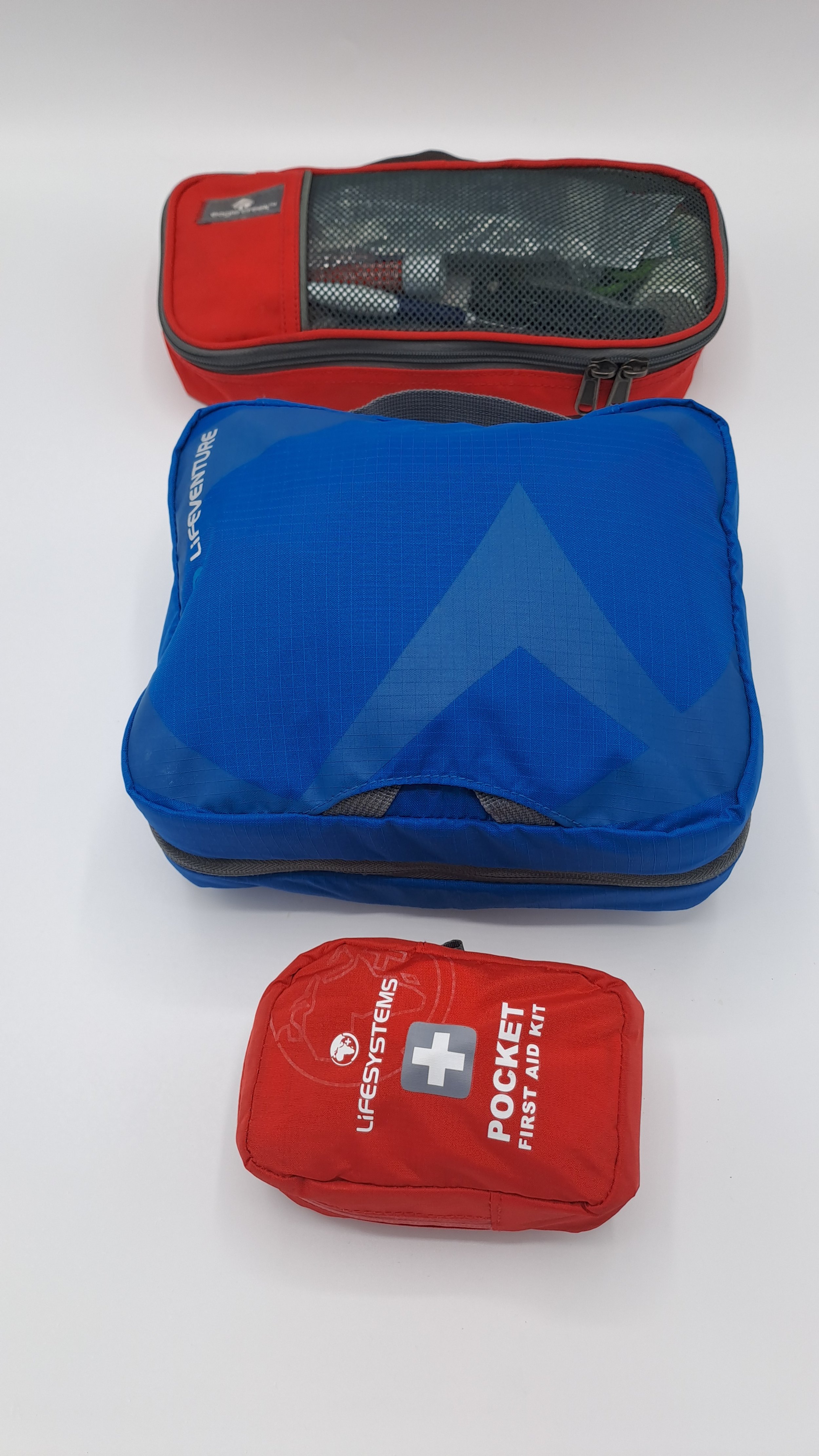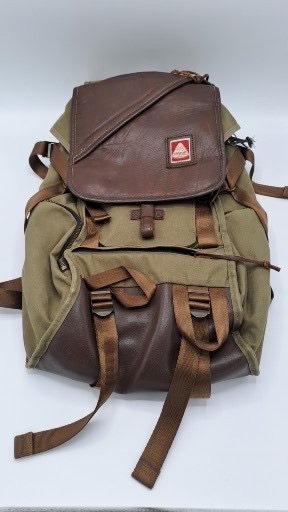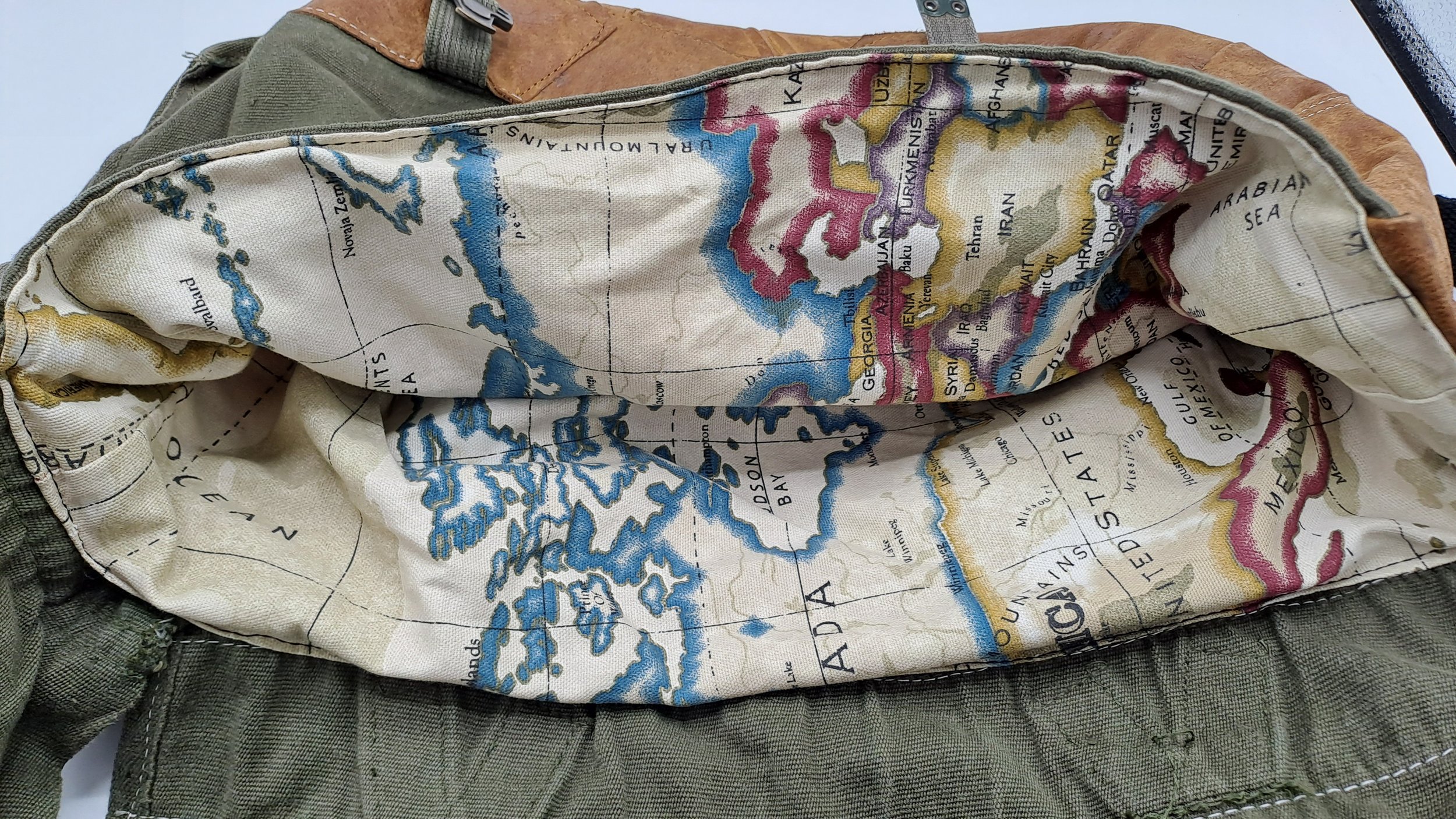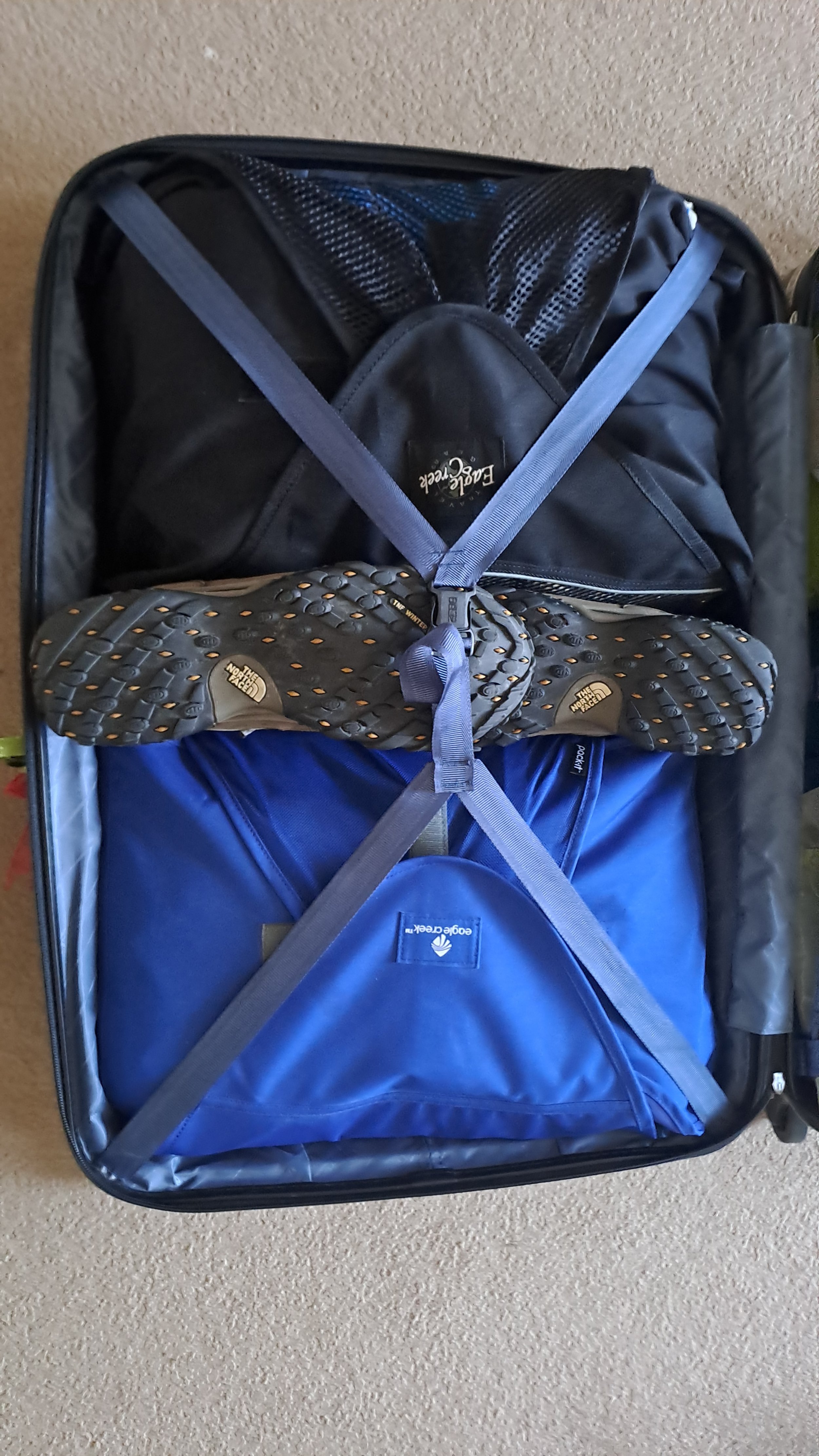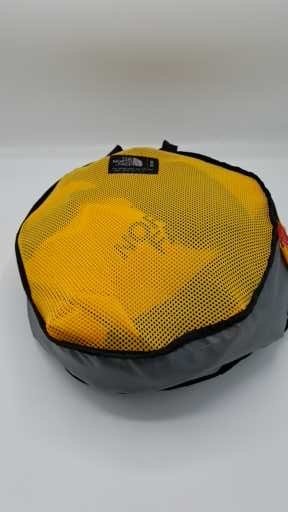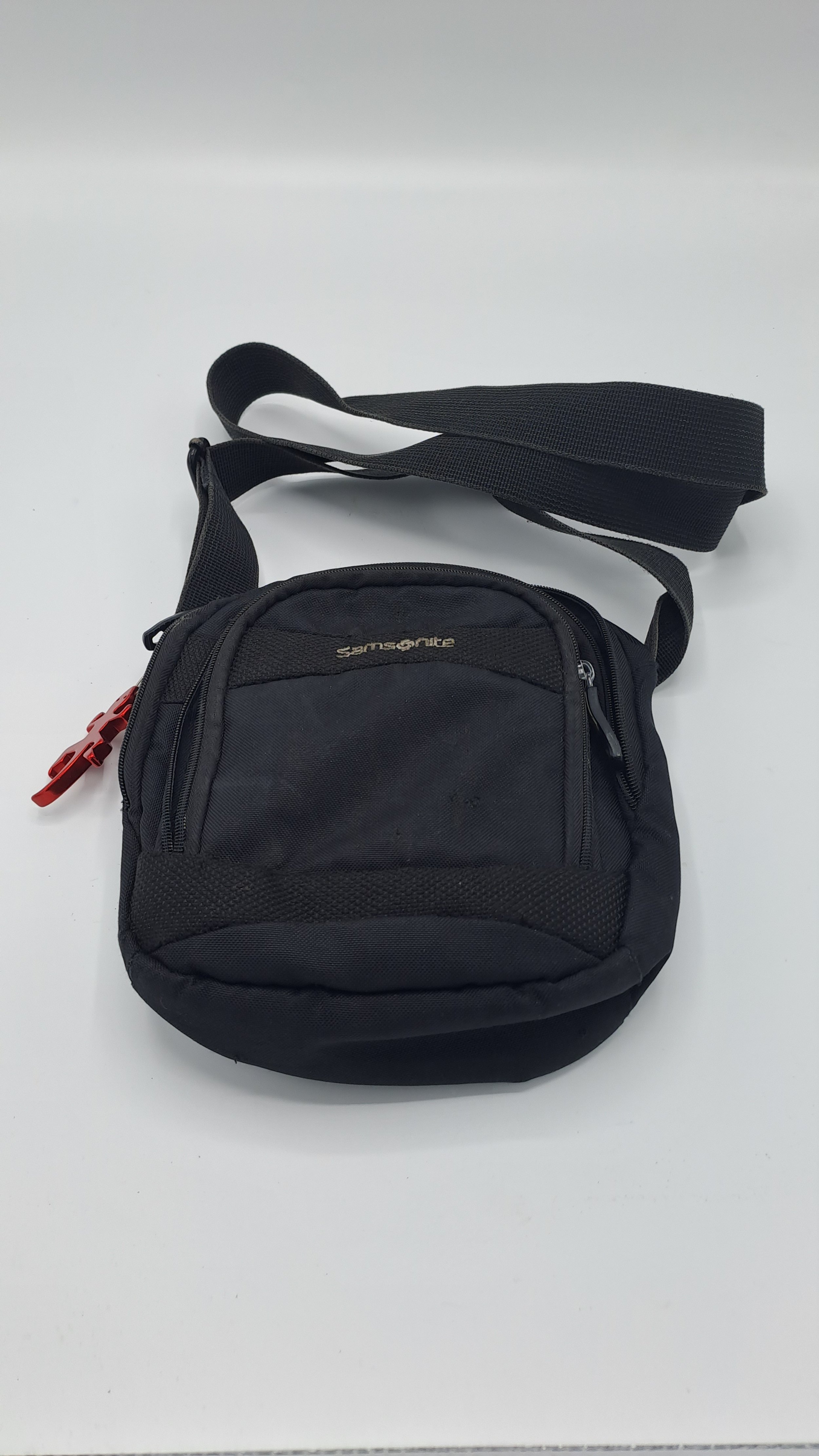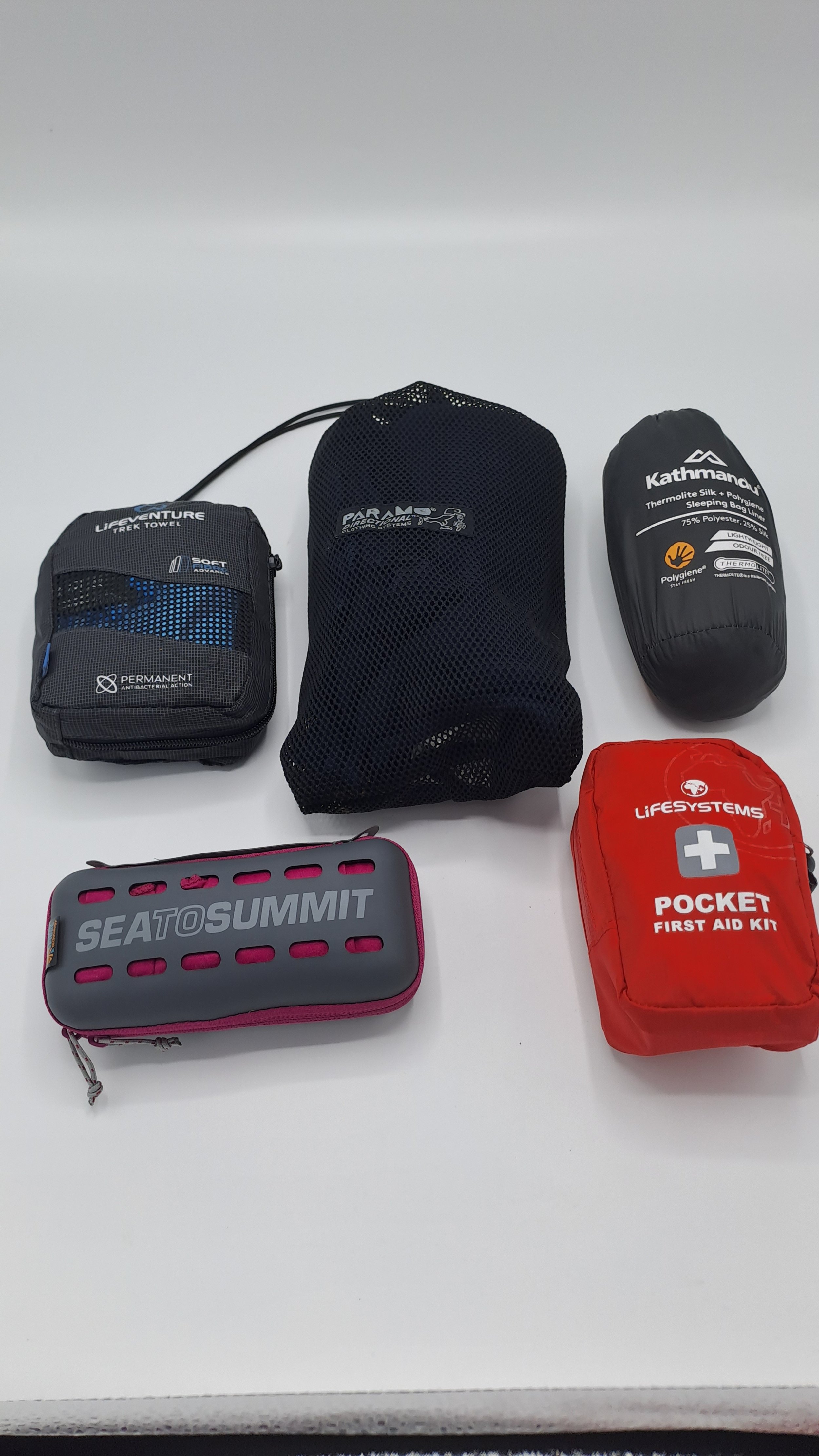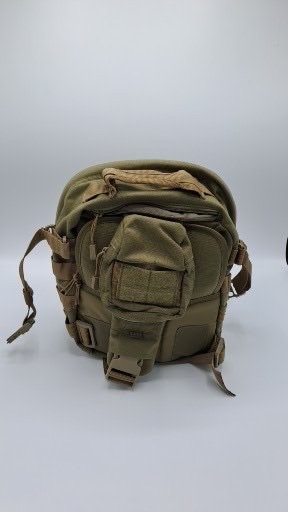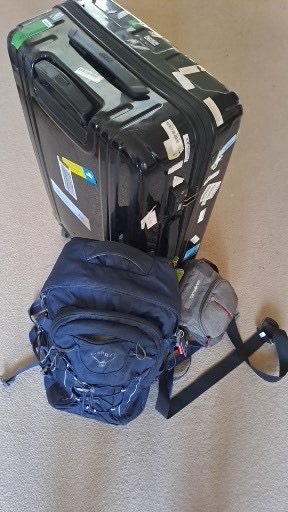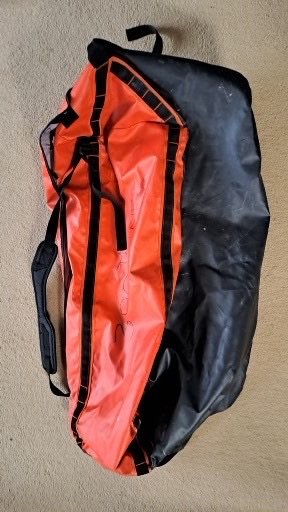
Travel Essentials Bags Suitcases and Duffels
“There is no one size fits all”
Quote Source - The Traveller
Bags, Suitcases & Duffels
If you have read articles elsewhere on these pages you will find out that we'‘re pretty obsessed with bags. it’s one of the few things you have to really rely on. It has to robust enough to meet what ever you are doing, big enough to carry all your junk (and do you really need all that?), light enough to get through aircraft weight limits without penalty, there and back, and look good, without looking too flashy that someone will nick (steal) it. Plus it has to fit in where you are taking it - overhead lockers, yachts, under-seat in trains etc. You also have to think about onward transport - on roof racks, public transport etc. A bag has to work hard for its money, on expeditions and adventure travel, and all that’s without thinking about security, ease of use, pull a long, and little things like being able to sit on it whilst you are waiting (without crushing everything inside).
You also have to look st all the flights and each different airlines particualry if you are traveling with different airline companies. There are also overhead locker size differences and what will fit on a B737-800 won’t fit on a Dash 8 - if that’s your next flight, so you may have to pack light for both flights, e.g. to the lowest denominator.
Bags and Cases in the Museum collections
Hard Travel Cases
Cardboard 60-70s set - don’t mock the cardboard - it got hundreds of thousands of people around the world, and if you look at the classic Scott of the antarctic photo of him on his ship - you will see a “Globe trotter” cardboard case, the choice of many a polar expedition (and probably all that was available at the time. We have 2 Globetrotters in the museum collection.
Globetrotter - Classic blue cardboard / leather same as Robert Scotts suitcase for the 1912 expedition to the South Pole. With train sticker - popular in the 1950’s. Cases were a lot smaller back in the day, people had less and traveled with less. Also modern Globetrotter, now luxury luggage and crazy money - overnight carry on size - in navy blue with straps, looks fabulous, but far too heavy to use on aircraft, (but if you can afford the cases, you should be travelling first class - darling!) but great for that euro road trip or cruise, where you want to be a bit posh. Beautiful lining, and well made, it will make you feel like a 1950’s film star! Strap it to the boot of your MG luggage rack and you are away - just don’t forget to bring it in from the rain, unless you want mushy card.
Samsonite Bright Red - Trio GLS Rolling Hard Shell Suitcase 1990s - Hard Case - Clam shell type 70/30 split with smaller top than bottom configuration which works better than a 50/50 split. (red) Polyurethane - pretty much indestructible (but heavy now) 20 years service of surviving the worlds most dangerous airlines and baggage handlers. Dropped off luggage roof racks, cobbled pavements and curbs and stairs - it survived them all. Numerous travel stickers from around the globe. it is very easy to spot on a luggage carosel.
Rimowa - 2000’s - Black with a zip. The world’s first ever polycarbonate suitcase, designed in Germany to provide the best in high-tech functionality. Out of the 3 we had - 1 is dead, 1 is broken and 1 still alive (but had a broken lock) - and it only alive because it is a carry on. Black zip. The problem appears to be that it gets very cold in the hold of the plane making the polycarbonate brittle, and it the baggage handlers drop it after that - it splits. We have also have 2 lock failures. Great looking cases, but not very robust, despite the ads showing attack by crocodile and car crush , guess they had never met the ground agents of the airlines. The zip which were worried about worked great and we have never had a zip fail.
Back Packs and Day sacks
Karrimor - Ultra lightweight - unpadded day pack 1990’s, useful to take as a day pack in your main bag. This one was used for indoor climbing, gym and swimming for 25 years. British brand once favoured by the British Military and outdoor enthusiast alike. We ran the North Pole Marathon in pair of their trainers. 1 size too big for extra socks, worked a treat until we slowed down and then we had to switch to boots for the last 4 miles, as the feet froze. It was -46c.
Osprey - Blue - 35 litre - 5 litres bigger - you can also stuff your hand / man bag in - for those pain in the **s Airlines with one bag policy. Takes a couple of water bottles and a lightweight waterproof in the cargo net. Comfortable and fits all airlines, including most regionals and turbo props, it is big enough to get it all in, but not so big that it becomes too heavy. Not water resistant, padded back works well to pad you from sharp items, but it absorbs water, so don’t put it down in a puddle.
Osprey - Black 25 Litre - our go to bag for decades - this one has been around the world, and probably over a 100 countries and territories. Realiably carries everything you need.
Petit Sac - 12 litre - Un petit sac pour le ski, great for days out snow blading or skiing, takes a pair of fold down ski poles (great for marking jump turns on black and red runs when blading) plus spare crap, walkie talkie, water, sunscreen, and all the other junk you want to take. Light blue - single compartment, with two carry straps.
Hand Bags and Carry On’s
In a world gone mad - every airline seems to have a different size and weight of bag you can carry on - it’s nuts.
Lambretta - Stylish over the shoulder bag for about town and city breaks, but not practical enough for day to day use - multi gender.
TUMI - Expensive stylish over the shoulder bag, leather and ballistic nylon, it is very robust, but too heavy to take much or use day to day use. Looks great - not practical.
Samsonite - 55X40X25CM - black - carry on cloth - another stalwart - 20 years use (our go to commuter / weekend bag for many years), but the madness of modern travel and different bag sizes means it doesn’t work on many airlines now. it is still a good case - but life is too short to check bag dimensions for every segment of every flight. (We still have to on occasions).
Remova - 31 litres - 55 X 40 X 20CM - Black polycarbonate - gets you on most airlines. Still our go to hard carry on case. 100’s of trips, understated enough not to stand out, posh enough for 5 star. We tried to break into it with a screwdriver when the lock failed - they are tougher than you think. We didn’t get in. But patiently went through every code, (when we had calmed down) until we got the number - the lock was slipping and reseting itself to a new code. Very Frustrating. Great case and one of the best. 2 wheel. (Takes the bumps better than 4).
Adventure Bags and Duffels
Adventure bags tend to be pretty specialist, but still need to be able to take clothing, tech and any specialist items
Musto - Red sailing bag - enough kit and small enough to fit boat lockers - soft anti scratch feel. Robust - simple. Flexible enough to squeeze in tight spaces.
Kipling - Travel Duffel - hard bottom (keeps its shape) and two split separate compartments - great for getting to stuff in tight spaces like overnight train carriages, uses detachable TSA locks.
Advance Evolution - Scuba Bag - space for fins and mask - one big compartment for everything else - oversize anti jam plastic zips - pull along with wheels and extending handle.
Beaver - Cheap effective scuba dive bag, plastic zips (corrosion is not your friend with seawater) - black, compartments for fins and main section. Great for wetsuit - drysuit. Carry only - no wheels.
Expeditions Bags
These are mainly duffels - capable of carry heavy and large amounts of kit from climbing ropes and axes to all your daily clothing and specialist boots
Frame Rucksack - Came from Millets in the 1980’s - detachable bags (detached and lost) - The frame is none the less really useful to carry items. The framed ruck sack is out of fashion but its a useful carry all. We’ve carried reindeer skins (great insulators when you are on the ice), ice auger, chair, day pack, fishing kit, jacket etc (all straps on). We took this frame to Rio Mazan Expedition, as well as dog sledding across Sweden.
North Face Duffel - We have 3 - Red, Yellow, Black, 80 litre - 120 litre - The ubiquitous expedition bag, very hard wearing - water resistant.
Mountain Hardware - Our North Pole bag - ultra lightweight - not hardwearing, almost one shot - but works a treat. Water resistant. Pelicases and tupperwear tins, inside for damageable / stuff you want to keep dry..
Ortlieb - Waterproof - hardwearing - commercial divers and climbers use these bags, also great for cycle touring and those endless wet days - at least your gear stays dry.
Specialist Bags and Cases
Flight Case - Hard case, for air charts, log books, flight paraphernalia, pencils, pens, chinagraphs; ours is from a flight school in Borehamwood Herts. Elstree Airdrome, complete with European space station sticker at Kiruna, and yes we got to press the launch button.
PADI - Classic divemaster bag - for all your books, forms, dive computer, dive time calculators, dive log books* etc. Black with PADI Logo. *A lot of these went on line or dive computers - now lost - but the paper ones are still around - tech isn’t everything!
Musto - Classic “yactmaster’ bag - softbag for charts, GPS, compass, dividers, protractor, pencils, harbour and marina guide).
Rope / Bouldering Bag - Really useful bit of kit, a rope bag that has a fold out sheet to keep the rope you are using on, so you don’t fill it with damaging grit and dirt - smart eh!
Miscellaneous Box’s and Bits
Tupperware Boxes - water resistant - clear - great for scuba / sailing / expeditions as bosuns box (sailing needles, jubilee clips and bungs etc), scuba box - (seals, oxygen seals, spares, diaphragms, talc etc).
Peli Cases - Waterproof - damage resistant - the go to case for kit you don’t want damaged in hostile environments - cameras, computers, tech.
Map Case - Clear- water resistant - nothing is waterproof in Wales! Essential for keeping maps dry - and you should carry one - even if you have GPS and use it. Stop now and again and orientate. Oh no the GPS has died - don’t worry I have a map and compass and I know how to use it!
Aluminium Waterproof Tubes Various sizes of aluminium screw thread tubes with a seal - great for emergency cash, or whatever else you want to keep dry. Red and Silver.
RFID Credit Card Case - Changes in technology - scanning etc may leave your credit cards / debit cards vulnerable to theft. These little cases block the scanning - saving the day.
We have many more to add from specialist make up cases of the 70’s through to Hand Bags, boot packs, bike bags, wheel bags, panniers, and ski cases to name just a few.
We have over 50 bags in the collection - charting a range of activities and uses, from the 1960s, and every era to present day.
-
Don’t overweigh your bag. Don’t carry anything for anyone unless you you know them, are certain what it is, and are prepared for any consequences if its isn’t. In short don’t. In the 1980’s we were once sent a pack of drugs to carry out for a mountaineering expedition from someone who we would have (and did) trust our lives too. But they did it without asking or telling us what they were, (they were heart - altitude and other travel medicines) But why weren’t they taking them? It all seemed a bit odd. We refused - had a major falling out. It’s odd you can trust someone literally with your life - but drugs - no every time!
Don’t forget to weigh your bag before you leave - bathroom scales normally work well. Pack 2 -3 kg lighter than you need - going out gives you 1.5-2.5 kg of crap to bring back! Without incurring weight penalties. Without incurring weight penalties. (Oddly bags always seem to weight heavier coming back by at least half a KG). We also take old stuff to dump - clothing, equipment etc. It works in many ways, poorer people get usable stuff for free - we launder it first, so you are also helping them out through a bit of philanthropy, direct with no greedy middleman, the item gets reused so it helps the planet, and offsets a tiny bit of that carbon you have used getting there, and you have more space and weight to bring back things, which in turn supports the local economy though direct purchase, and as a bonus you get to enjoy local craftsmanship at home. It’s a win, win, win, win situation. OK so it costs you a bit of cash, work harder, and longer - it’s worth it. (We think).
DON’T EVER CARRY ANYTHING ILLEGAL. Particularly recreation drugs, opioids. - even over the counter pain killers, and anything you don’t have a licence for.
-
Don’t forget you can buy stuff abroad - they have shops! So unless it is something very specific - eg medicines, batteries, memory cards etc, don’t take too much - t-shirts that sort of thing.
Some Don’ts
Some Do’s
-
Do be organised - a little bit of thought at the start makes a big difference. What do you need and when do you need it. Its a bit like moving home - you need the mattress and duvet and maybe pillows, the kettle. mugs and coffee and a change of clothes, and your personal hygiene kit. Nothing else matters. So make sure things you need - when you are tired, irritable and fed up, are on top so you can get your chocolate, toothbrush, headache tablets, spare pants (knickers) and t-shirt - all to hand - instead off throwing the entire contents out in a fit of pique. And yes we have done that too! Packing cubes - bright lurid colours - day glow greens, whites and red, sky blues, easy recognition particularly in a jungle when you might just have candle light - no electric and a head torch.
-
We have never had anything broken including SLR Cameras - zoom lenses - sea shells, pottery. glass, bottles of wine - your name it and it all goes in the hold.
If you have a 50/50 split case or similar think reverse ways a round - what will be on top of each section will end up in the middle. so padded and protected. Use your boots and shoes to stuff with breakables and use t-shirts and other clothing to wrap - make sure you have a tight - interference fit, eg stuff can’t move around. Strap it all down with the cross straps - good bags should have these internally.
Try not to have too much weight in the case, as this can overload the ability of the case to absorb impact.
If you are really worried then carry it on - put it in your day pack, whatever you can to keep it safe. At least 85% of the items in the museum got here this way. It can be done.
What we do
-
When you are planning an expedition or any adventure - you also need to plan your bags. There are so many factors to take inti consideration.
What is your primary means of transport - what are dimension and weight limits
What are your secondary means of transport - what are dimension and weight limits / squish ability you might need to think about day packs - eg 2-3 days for light aircraft etc.
Will you have to carry it for, if so how far for how long.What is your personal capacity - will it be at altitude for example or up a mountain.
What’s has to go in the bag? Think kit, clothing, etc. It could be bikes, sailing, scuba, or climbing gear, tropical or bulky polar clothing.
Does the bag need special features - water proof on the outside to stop gear and clothing wet, or waterproof compartments to stop wet gear getting dry gear wet. (damp travels really quickly in a bag, and even a pair of swimmers can make the whole bag damp - in tropical climates it can go mouldy very quickly).
What is the duration of travel, how many days are you staying put - is a basecamp or a different hotel every night.
Do you need dust proof bags or special containers to protect sensitive equipment.
What are you bringing back? Geology samples, souvenirs, large bulky items or breakables such as glass etc.
Buy the best you can afford - but spending £1000’s on cases is no guarantee they won’t break. One thing we can say is that we have never had a bag failure (apart from not being able to get into it) in terms of it doing its primary function which is to protect what’s in it .We’ve carted expensive lenses, fragile shells, bottles of champagne, glasses and pottery and they have all survived the journey!
The bags themselves have never let us down, scratched, bashed, split and crushed in, they have held together to do their job, which is ultimately to cart stuff about. We’ve never had a wheel off - a strap break, or the goods inside damaged. Game on.
Our Crazy Carry on World!
Confused - you will be, and this is subject to Change! Check with you airline or just carry the minimum. dimension bag.the problem also comes when you have different airlines for different segments of flights. It used to be a lot simpler!
This is just to emphasis a point - don’t trust this guide check with your airline.
AIRLINE DIMENSIONS MAX. WEIGHT
EASYJET 45X36X20 CM TUI FLY 55X40X25 CM 10KG IBERIA 56X40X25 CM 10KG AER LINGUS 55X40X24 CM 10KG AEROFLOT 55X40X25 CM 10K AIR NEW ZEALAND (MAX cube 118CM) 7KG AIR TRANSAT 51X40X23 CM 10KG ALL NIPPON AIRWAYS 55X40X25CM 10KG CEBU PACIFIC 56X35X23 CM 7KG CZECH AIRLINES 55X45X25 CM 8KG DELTA AIRLINES56X35X23 CM (MAX cube 114 CM) EMIRATES 55X38X20 CM 7KG ETIHAD AIRWAYS 50X40X21 CM (MAX. 115 CM)7KG FLYBE 55X35X20 CM 10KG ISRAIR 50X40X20 CM 8KG JAPAN AIRLINES 55X40X25CM (MAX. 115 CM) 10KG LAN 45X35X20CM 10KG MONARCH 56X40X25 CM 10KG PHILIPPINE AIRLINES(MAX. 115 CM)7KG QATAR AIRWAYS 50X37X25 CM 7KG SINGAPORE AIRLINES(MAX cube 115 CM) 7KG TUNIS AIR (MAX cube 115 CM)8KG UNITED AIRLINES 56X35X22 CM (MAX. 115 CM) 23KGIf you look carefully under the bunk of Scott of the Antarctic in the photo of him writing at his desk you will see a similar Globe Trotter case. Cardboard at its best.
There are bags for everything! Boot bags are great for keeping mud ou the car and house. It doesn’t have to be a posh one like this scarpa bag.
Bags have several function 1) To keep you clean stuff clean and dry and 2) To stop wet dirty stuff from making clean dry stuff the opposite!
